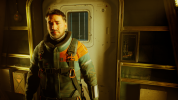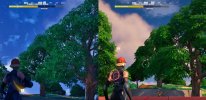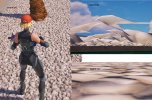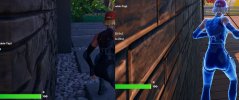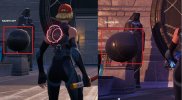Descorde has removed emissive lights because it's not stable enough:
Lighting primarily with emissive objects is actively discouraged by Lumen... would be great to handle arbitrary many light emissive things in the future but it is obviously a lot more expensive. That said it's not clear why the cubes in Desordre aren't analytic lights, which would benefit all techniques. If my memory of the game serves (I played it a bit when it initially came out), there's not actually that many of them.
Found it, video marked. Obviously no perfect fix, but when you start making large light radii you can see pretty sharply delineated artifacts:
Hmm yeah I'm not sure offhand why that looks so bad there. That is not typically what I'd expect a single light overlapping case to look like.
I made a similar situation in the Lyra example and while you can see some ambiguity around the places where the soft and hard shadows overlap (as expected), it doesn't look nearly as objectionable as the video case. Note these are raw SMRT results before TSR/other temporal integration, hence the additional noise:

Note that this is actually with a fairly large source radius, just a bit zoomed out to see the context. The result doesn't change materially for local lights when you zoom in (with directional lights the penumbra is effectively clamped in terms of screen area, which to some extent limits how badly you can shoot yourself in the foot).
Forcing occlusion whenever you cross a behind/in front boundary also doesn't really fix things with these sorts of settings per se - it functionally just overlays an unfiltered shadow on top of the proper result. Losing inner penumbra in these sorts of cases means you get what looks like an unfiltered shadow map with a slight haze around it, since the minimal outer penumbra is not going to properly fade to fully occluded:
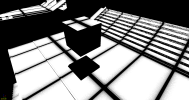
I briefly looked for cases like this in GoW to see what their solution looks like (since it is not exactly the same sort of thing - it seems to be a bit targeted to be a bit more PCF-like rather than specifically raytracing like), but I couldn't find any cases where they had set the softness particularly high. I'm guessing those cases look bad in their solution as well so their artists just know to avoid it. There are similar notes about keeping penumbra sizes in check in the VSM documentation... if unheeded no amount of algorithmic magic is going to avoid artifacts with shadow maps.
Anyways always interested to see what other folks are doing. Just not sure there's a silver bullet here.

